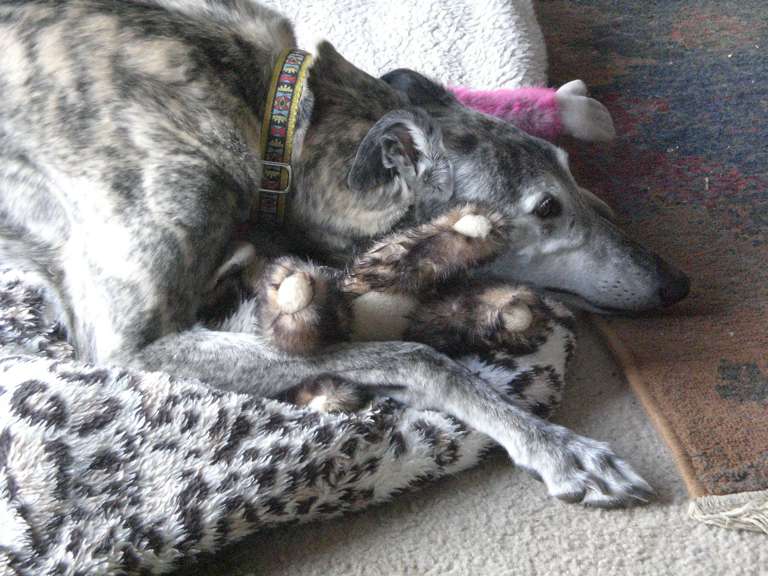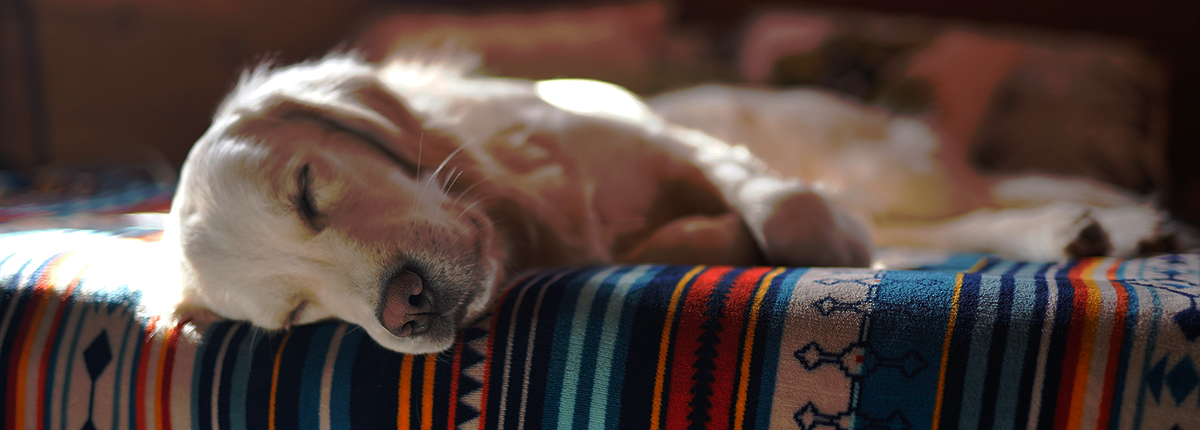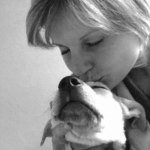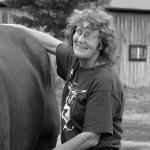
Treating cancer is most successful when it is detected and surgically removed early in its development.
If you find a lump on your dog’s leg, the first thing you should do is to measure the size of the mass using a measuring tool, and note the precise location in your records.
If the mass is painful to the touch or looks red and inflamed, or instead of being a regular shape and moving freely when you hold onto it and try to slide it over the skin, is irregular and attached to the underlying tissue, then you need to call your vet for an appointment right away.
If the mass is not painful, and not irregular and moves freely when you try to slide it over the skin, then you can observe the mass for a week or two, and if it is growing in size, then call your vet for an appointment.
If its stable in size, then adopting a watchful waiting approach will probably be OK.

Statistically most skin masses are benign, which means that they don’t pose a problem to your pet except for its growth locally, which could interfere with movement if its over a joint, or is in a location where its growth interferes with function.
At your veterinarian they will suggest preliminary laboratory screening of the mass by performing a “fine needle aspirate” using a very thin hypodermic needle inserted into the mass. This procedure isn’t painful, doesn’t need sedation or anaesthesia, and can help a lot to determine if the lump is cancerous.
The cells from the lump are drawn up into the syringe for microscopic staining and visual observation by your veterinarian or a clinical pathologist. The most accurate read of the cytology will be by a clinical pathologist, although it may cost you more than having your vet read it them selves.
This diagnostic technique can be enough to achieve a diagnosis of cancer, but will not tell you what type of cancer it is, or what type of biological behaviour the cancerous process will manifest.
The best and most accurate diagnosis of the lump comes from histopathology (as compared to cytology) because this gives your vet the precise tumor cell type and the presence and degree of malignancy of the cancer.
Histopathology is performed with a biopsy of the mass. This is achieved by cutting into the mass for the purpose of submitting a small piece of the mass to the pathology laboratory. Because of the more invasive nature of procuring a piece of the tissue, some form of sedation, a local or general anaesthetic is necessary.
Biopsies can be performed in three different ways:
[/mk_fancy_title][mk_custom_list icon_color=”#963802″ margin_bottom=”30″ align=”none”]
- The mass can be completely excised with “margins” (more on margins later),
- A special biopsy needle can be used,
- The surgeon may just take a small piece of the tumor if it is very large and not able to be completely removed due to its size or location.
[/mk_custom_list]
For most tumors there is no danger that taking the biopsy will cause the cancer to spread. Tumors of the lung are best not biopsied, but are better off being removed along with a part of the lung. Other masses, such as aggressive mast cell tumors can release histamines into the blood creating secondary acutely critical problems.
Ultimately, the pathologist is the specialist who will diagnose the cancer for your veterinarian. The type of cancer, based on its microscopic appearance can help predict its course of action, and suggest the best therapy, as well as tell if it is likely to return after it has been removed.





We have a difficult cancer situation with our dog and are happy to get our vet to do a referral for Dr Silver to do a consult on -we are looking for THC or CBD treatmet as outlined in his latest report
I lived in Boulder for may years and now live in Santa Barbara and have all necessary films from VMSG surgical and oncology unit in Ventura
Please let me know where to have our DR call for a referral ASAP – time is not our friend so I would appreciate a response as soon as possible
Thank you
Feel free to call 8054520297
DeAnna,
Unfortunately due to the current situation in California, its too risky for a veterinarian to recommend medical marijuana or even hemp for a patient. The California State Board of veterinary Medicine has threatened veterinarians with loss of their licenses or criminal prosecution if they help someone like you with a dog that is suffering. Its really a pretty terrible situation for the four-legged.
Dr. Silver